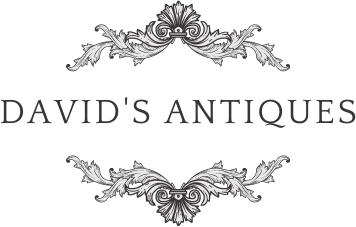Over $150

The Ethics of Dealing with Controversial Historical Items
As museums and cultural institutions face increasing pressure to address historical controversies surrounding their collections, the question of how to ethically handle controversial historical items has become a hotly debated topic. Whether it’s Confederate statues, Native American artifacts, or Holocaust relics, museums are grappling with the ethical implications of displaying these objects in their collections.
The first step in addressing these ethical concerns is to acknowledge the harm that has been caused by the historical events associated with these items. For example, Confederate statues are often seen as a symbol of racism and oppression, Native American artifacts are viewed as cultural appropriation, and Holocaust relics are seen as a painful reminder of the atrocities committed during World War II. It’s important for museums to recognize the impact of these objects on marginalized communities and to acknowledge the harm that they have caused.
Next, museums must consider the implications of displaying these objects. One question to consider is whether the object is being displayed in a way that perpetuates harmful stereotypes or reinforces negative narratives. For example, displaying Native American headdresses without context can perpetuate the myth of the “noble savage” and erase the complex history of Native American cultures. Similarly, displaying Confederate statues without acknowledging their role in the history of racism and oppression can perpetuate harmful narratives.
Museums must also consider the wishes of the communities from which these objects originate. For example, many Indigenous communities have called for the repatriation of their artifacts, arguing that they were never given voluntarily and were often taken through violent means. In these cases, museums must weigh their obligation to preserve the historical record against their obligation to respect the wishes of these communities.
One potential solution is to contextualize these objects within their historical and cultural context. For example, displaying Confederate statues alongside written information about the history of racism and oppression in America can help visitors understand the complex history of these items. Similarly, displaying Native American artifacts alongside information about the history of forced removal and cultural genocide can help visitors understand the impact of colonialism on Indigenous communities.
Ultimately, the ethics of dealing with controversial historical items require museums to balance their obligation to preserve the historical record with their obligation to respect the wishes of marginalized communities and to avoid perpetuating harmful stereotypes and narratives. By acknowledging the harm caused by these objects, contextualizing their historical and cultural context, and taking into account the wishes of marginalized communities, museums can ensure that their collections contribute to a more just and equitable society.
Shop Our Mid Century Modern Collection
-
Original price $179.99Original price $179.99 - Original price $179.99Original price $179.99Current price $119.99$119.99 - $119.99Current price $119.99
18" Mid-Century Modern Multi-Colored Urn-Form Vase
David's Antiques and OdditiesOnly 1 available!Mid-Century Modern Urn-Form Vase Title:18" Mid-Century Modern Multi-Colored Urn-Form Vase Description:Presenting a stunning Mid-Century Modern vase...
View full detailsOriginal price $179.99Original price $179.99 - Original price $179.99Original price $179.99Current price $119.99$119.99 - $119.99Current price $119.99Sale -
Original price $39.99Original price $39.99 - Original price $39.99Original price $39.99Current price $29.99$29.99 - $29.99Current price $29.99
Pressed Glass Burnt Orange MCM 3x3 " Top Hat.
David's Antiques and OdditiesOnly 1 available!Title: Burnt Orange MCM 3x3" Pressed Glass Top Hat Description: Add a touch of Mid-Century Modern charm to your decor with this exquisite Burnt Ora...
View full detailsOriginal price $39.99Original price $39.99 - Original price $39.99Original price $39.99Current price $29.99$29.99 - $29.99Current price $29.99Sale -
Original price $99.99Original price $99.99 - Original price $99.99Original price $99.99Current price $49.99$49.99 - $49.99Current price $49.99
MCM Stangle 8" Picture Black and Gold Hand Painted
David's Antiques and OdditiesOnly 1 available!Title: Mid-Century Modern Stangl 8" Picture with Black and Gold Hand-Painted Coloration Description: This Mid-Century Modern (MCM) Stangl 8" pictur...
View full detailsOriginal price $99.99Original price $99.99 - Original price $99.99Original price $99.99Current price $49.99$49.99 - $49.99Current price $49.99Sale -
Original price $79.99Original price $79.99 - Original price $79.99Original price $79.99Current price $24.99$24.99 - $24.99Current price $24.99
MCM Crackel Cruet Set. Bold Orange Color
David's Antiques and OdditiesOnly 1 available!Title: MCM Crackle Cruet Set, Bold Orange Color, 6 Inches High, Metal and Cork Stoppers Description: This Mid-Century Modern (MCM) Crackle Cruet Se...
View full detailsOriginal price $79.99Original price $79.99 - Original price $79.99Original price $79.99Current price $24.99$24.99 - $24.99Current price $24.99Sale -
Original price $129.99Original price $129.99 - Original price $129.99Original price $129.99Current price $99.99$99.99 - $99.99Current price $99.99
Title: Vintage Marcasite and Cultured Pearls Sterling Silver Ring, Size 7.5, Imported from Germany, 1980
David's Antiques and OdditiesOnly 1 available!Title: Vintage Marcasite and Cultured Pearls Sterling Silver Ring, Size 7.5, Imported from Germany, 1980 Description: Immerse yourself in vintage e...
View full detailsOriginal price $129.99Original price $129.99 - Original price $129.99Original price $129.99Current price $99.99$99.99 - $99.99Current price $99.99Sale











Leave a comment